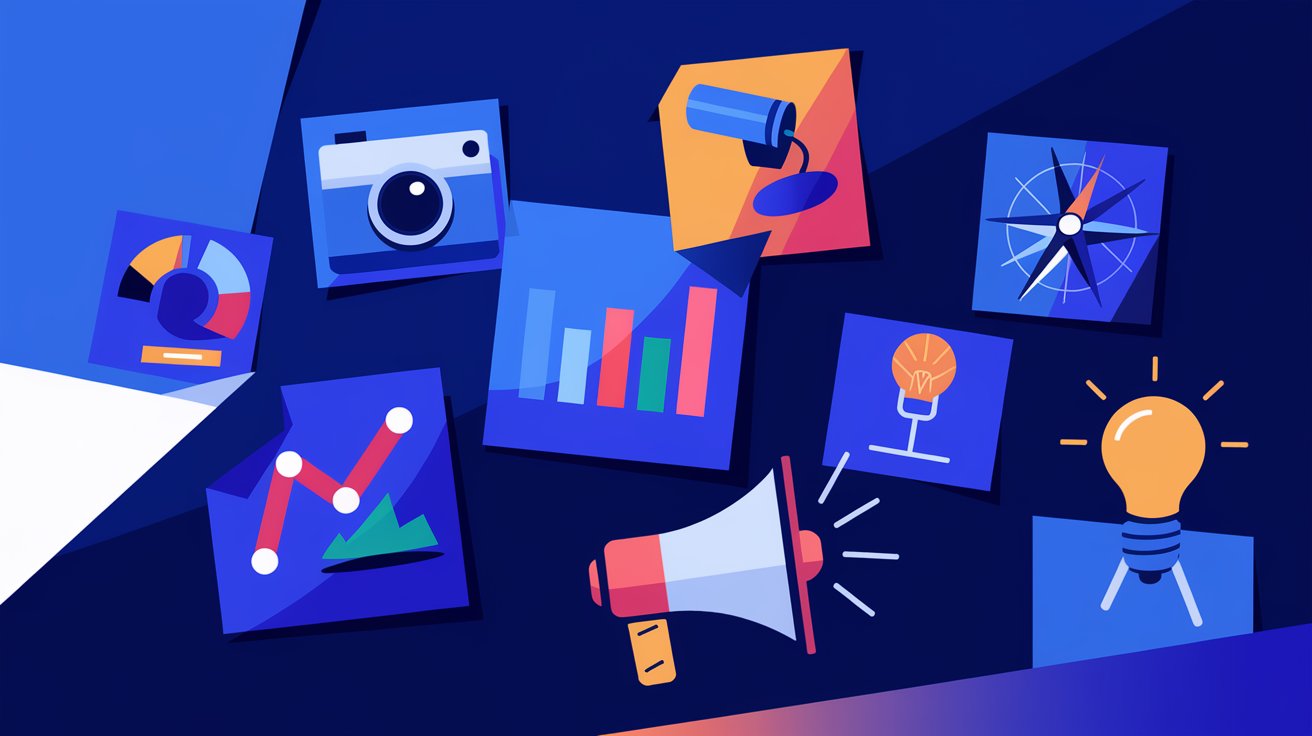If you’re running a SaaS business, you understand how crucial content marketing is to your overall strategy. It’s a vital tool in the customer acquisition journey, helping you attract potential leads and guide them down the sales funnel. However, there’s a significant difference between creating content that generates traffic and content that actually converts those leads into paying clients. Many SaaS companies struggle to bridge this gap, leaving their content efforts feeling fruitless. So, what’s going wrong? This article will dig into the reasons why your SaaS content might not be converting, providing strategies to refine your approach.
Misalignment Between Content and Buyer Intent
One of the main reasons SaaS content fails to convert is that it often misses the mark when it comes to aligning with buyer intent. Too often, SaaS companies focus on producing educational or informational content that, while valuable, doesn’t push prospects closer to making a purchasing decision. This misalignment can leave potential customers with a lack of clarity about how your solution fits into their needs.
What is Buyer Intent?
Buyer intent refers to the underlying motivation of your prospects when they are searching for content or solutions. Are they merely researching, or are they ready to make a purchase? If your content is overly focused on education without offering a clear path to conversion, it could be falling short of driving revenue. SaaS businesses need to strategically create content that addresses different stages of the buyer journey, from awareness to decision-making, with the right calls-to-action (CTAs) that encourage users to take the next step.
For example, if someone is searching for a “CRM software for small businesses” or a “B2B CRM“, they may not want to just learn what a CRM does; they are likely in the market for a specific tool. Your content should address that buyer intent by guiding them towards why your product is the right choice and how it can solve their pain points.
Ineffective Calls-to-Action
Your SaaS content could be informative and engaging, but if it lacks strong calls-to-action (CTAs), it might not be doing its job in converting readers into customers. Many SaaS companies make the mistake of being too passive with their CTAs, assuming that if their content is valuable, the audience will naturally take the next step. This assumption is flawed.
The Power of Clear CTAs
Effective CTAs are more than just buttons or links; they are strategically designed prompts that encourage users to take action. Whether it’s signing up for a free trial, scheduling a demo, or downloading a whitepaper, your CTAs should be clear, compelling, and placed in strategic locations throughout your content.
A well-crafted CTA speaks directly to the prospect’s needs and motivates them to engage further. For example, instead of using generic phrases like “Learn More” or “Sign Up,” tailor your CTAs to be specific, like “Start Your Free Trial Today – No Credit Card Required!” or “See How [Your Product] Can Save You Hours Every Week.”
Lack of Value Proposition Clarity
Another common issue in SaaS content is the lack of a clear value proposition. Your prospects need to know exactly what makes your solution different from the countless other SaaS products on the market. If your content doesn’t convey this uniqueness, it’s unlikely to convince them to convert.
What is a Value Proposition?
Your value proposition is the promise of value that your product delivers. It’s the reason why someone should choose your SaaS solution over a competitor’s. If your content is vague about your product’s benefits or fails to differentiate your offering, your audience will struggle to see why they should choose your service.
For example, if you’re offering a project management tool, you need to clearly articulate why your platform is better suited to their needs than Asana, Trello, or Monday.com. This means going beyond just listing features—highlight the specific outcomes and benefits your users will experience by choosing your solution.
Pros and Cons of Targeted Content Strategies
When it comes to converting leads into paying clients, employing a targeted content strategy is often a top recommendation. However, like any strategy, it comes with its own set of pros and cons. Below is a balanced analysis of this approach.
Pros:
- Higher Conversion Rates: Content tailored to specific buyer personas or stages in the funnel can drive more qualified leads and, consequently, higher conversion rates.
- Improved SEO Performance: Targeted content often aligns better with long-tail keywords, which can improve your search engine rankings and visibility.
- Better User Experience: Creating content that speaks directly to your audience’s pain points enhances the user experience and builds trust.
- Efficient Resource Allocation: Focusing on specific content goals allows you to allocate your resources more effectively, leading to better ROI.
- Enhanced Customer Retention: Targeted content can also improve post-sale engagement, ensuring your customers get the most out of your product and remain loyal.
Cons:
- Narrow Audience Reach: While targeted content can convert well, it may limit your audience reach, especially if you focus too narrowly on certain buyer personas.
- Time-Consuming: Crafting content for specific personas or stages requires more time and research, which can slow down your content production cycle.
- Content Saturation: In some niches, highly targeted content might face stiff competition, making it harder to stand out.
- Less Room for Experimentation: Focusing on a specific strategy might limit your ability to experiment with broader content ideas that could yield unexpected results.
- Higher Costs: The need for deeper research and more specialized content can increase your production costs, particularly if you’re outsourcing work to experts.
Myth Busting: Common Misconceptions About SaaS Content Conversion
Many SaaS companies fall victim to widespread misconceptions that can derail their content marketing efforts. Here, we will debunk three of the most common myths.
Myth 1: More Content Equals More Conversions
While it might seem logical to assume that the more content you produce, the more conversions you’ll get, this is not necessarily true. Quantity does not guarantee quality, and if your content isn’t aligned with your audience’s needs, no amount of it will result in conversions. Instead, focus on creating high-quality, targeted content that speaks to specific buyer pain points.
Myth 2: Gated Content is Always the Best Strategy
There’s a prevalent belief that gating all your valuable content behind forms will automatically result in leads. However, overly aggressive gating can backfire. If your prospects don’t see enough upfront value, they may be unwilling to exchange their contact information. Balance is key—consider offering some content for free to build trust, and gate only your most valuable assets, like detailed case studies or exclusive webinars.
Myth 3: Conversion Optimization is Only About CTAs
While CTAs are crucial, conversion optimization is much more comprehensive. It involves every touchpoint, from your website’s design and user experience to the quality of your content and the clarity of your messaging. Neglecting these other factors while focusing solely on CTAs is a common mistake that limits conversion potential.
Common Mistakes in SaaS Content Marketing
Even with the best intentions, many SaaS companies make mistakes that hinder their content from converting leads into paying customers. Let’s break down five of the most common pitfalls and how to avoid them.
Mistake 1: Focusing Solely on Top-of-Funnel Content
Many SaaS businesses concentrate their efforts on top-of-funnel content, like blogs and educational resources, without nurturing leads through the middle and bottom stages of the funnel. To convert leads, you need content that supports them throughout their entire buyer journey, including product comparisons, case studies, and testimonials.
Mistake 2: Ignoring Data-Driven Insights
Content marketing should never be a guessing game. If you’re not regularly analyzing data to understand what’s working and what’s not, you’re missing opportunities to optimize your strategy. Pay attention to metrics like time on page, bounce rates, and conversion rates to continually refine your content.
Mistake 3: Underestimating the Importance of User Experience
If your website or landing pages are difficult to navigate, slow to load, or not mobile-friendly, it can severely impact your conversion rates. User experience plays a huge role in whether or not a prospect decides to engage with your content or bounce.
Mistake 4: Overcomplicating Your Message
When marketing a SaaS product, it’s easy to get caught up in the features and technical details. However, if your content is overly complex or filled with jargon, it could alienate potential customers. Aim for clarity and simplicity in your messaging.
Mistake 5: Not Personalizing the Content Experience
Generic content doesn’t resonate as well as personalized experiences. If you’re not segmenting your audience and tailoring your content accordingly, you’re missing a chance to connect with potential customers on a deeper level. Utilize dynamic content, personalized emails, and targeted messaging to enhance engagement.
Similarities and Differences in SaaS Content Strategies
Understanding the similarities and differences between various SaaS content strategies can help you determine the best approach for your business. Here, we compare five key aspects.
1. SEO Content vs. Lead Nurturing Content
- Similarities: Both SEO-focused content and lead nurturing content aim to engage potential customers and guide them down the sales funnel. They are both essential for attracting and retaining leads.
- Differences: SEO content is typically focused on attracting organic traffic by targeting keywords, whereas lead nurturing content is more about building relationships with prospects who have already shown interest in your product.
2. Gated vs. Ungated Content
- Similarities: Both gated and ungated content serve the purpose of delivering value to your audience. They can be used to educate, inform, or engage readers.
- Differences: Gated content requires an exchange of information (like an email address), which makes it a lead generation tool. Ungated content, on the other hand, is freely accessible and is typically used to build trust and authority.
3. Short-Form vs. Long-Form Content
- Similarities: Both short-form and long-form content can be effective for SaaS marketing, depending on the goals. Both formats can educate and inform potential customers.
- Differences: Short-form content is generally quicker to consume and is often used for social media or blog posts. Long-form content, such as eBooks or detailed guides, provides in-depth information and is better suited for educating and converting serious prospects.
4. Blog Posts vs. Case Studies
- Similarities: Both blog posts and case studies aim to showcase your expertise and value proposition to potential customers. They can be used at different stages of the buyer journey.
- Differences: Blog posts are generally more informal and can cover a wide range of topics, while case studies are highly specific and provide detailed proof of how your SaaS product has solved real-world problems for other businesses.
5. Product Demos vs. Educational Webinars
- Similarities: Both product demos and educational webinars serve to inform and engage prospects. They are interactive and allow for real-time engagement.
- Differences: Product demos focus specifically on showcasing your SaaS product’s features and benefits, while educational webinars might cover broader industry topics or challenges without being overly sales-focused.
By understanding these similarities and differences, you can strategically choose the right type of content for each stage of the buyer journey, ensuring that your prospects are continually engaged and moving closer to conversion.
Conclusion
Converting SaaS content into paying customers isn’t just about producing more content; it’s about creating the right content. From aligning your content with buyer intent and incorporating strong CTAs to myth-busting common misconceptions and avoiding typical mistakes, there’s a lot to consider. By refining your content strategy and focusing on what truly matters to your audience, you can transform your SaaS content into a powerful tool for driving conversions and growing your business.



